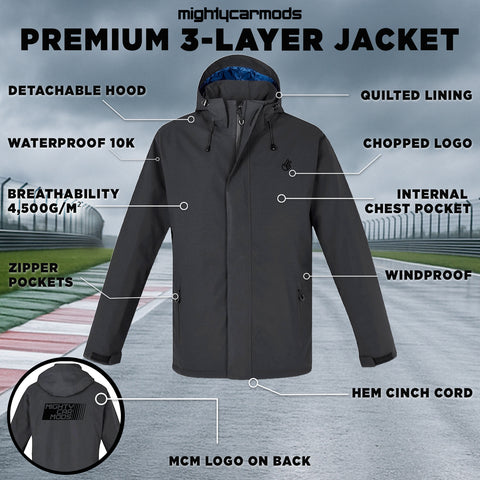
The secret history behind the Cannonball Run
The unsanctioned, illegal speed runs from New York City to Los Angeles, known as the Cannonball Run, are a thing of legend. Participants would risk everything to drive coast-to-coast across the continental mass of America as quickly as possible.
But they actually began as an important protest against draconian speed limits.

The original name for these protests was the Cannonball Baker Sea-To-Shining-Sea Memorial Trophy Dash. They were named after Erwin "Cannon Ball" Baker who set a slew of speed records before WW2, crisscrossing America in feats of daring and in the face of wild danger.

The whole shebang was the brainchild of automotive journalist Brock Yates. It all kicked off in a customised Dodge van called Moon Trash II on May 3, 1971 when Yates, fellow Car & Driver Editor Steve Smith, Yates's son,and Jim Williams loaded into the van and drove from the Red Ball Garage in Manhattan (central New York City) to the Portofino Inn in Redondo Beach, Los Angeles as quickly as they could.
That van, pictured below, which looks ripe for transporting air crew to their flight is Moon Trash II. Could you imagine racing 2500mi across America in that, over 50 years ago?

What began as a celebration of the American Interstate Highway System and the protest against federally mandated 55mph speed limits on those roads quickly drew in others who relished the challenge of crossing the continental USA faster than anyone had before. The fact it was all as illegal as punching a nun only added to the thrill.

While it has become a symbol of rebellion, freedom and fun, there were only ever five original, sanctioned Cannonball Runs: May 3, 1971; November 15, 1971; November 13, 1972; April 23 1975; and April 1, 1979.
Stories in Car & Driver and Time magazines became legendary as the public, thirsty for the freedom of the road, latched onto the racers as patriots and heroes who railed against a stupid, kneejerk rule being imposed by a draconian government.
And then there was Dan f*#king Gurney.

Gurney is worth a whole blog post here on his own. One of America's greatest racers he was a four-time F1 race-winner, Le Mans 24-hour-winner, twice the runner-up at the Indy 500, a successful racer in NASCAR/Trans-Am/rallying/touring cars, a legendary race car designer, the first person to wear a full-face helmet in F1 and the first person to celebrate a race win by spraying champagne (after his '67 Le Mans win), he was the golden child of American motorsport. And he won the Cannonball Run.
Driving a Sunoco Blue Ferrari 365 GTB/4 "Daytona", Gurney and Brock Yates smashed the Cannonball record in 1971, running coast-to-coast in just under 36 hours. After being severely delayed by snow in the mountains Yates woke up somewhere in Arizona to Gurney holding the V12 Ferrari somewhere north of 280km/h.

All up five movies have been made about these legendary cross-country races, but they completely overlook the real motivation behind the real life events. The Gumball Rally has some great car chase action (especially the scene leaving New York and the LA race) but the others are just fun slapstick.
And these movies have inspired a new generation of coast-to-coast racers.

In the early 2000s the legend of the original Cannonball Runs saw a new breed of racer wanting to test just how quickly America could be crossed. These modern runs, which have pulled the record down to under 25-hours has seen average speeds of over 100mph (160km/h) and have no affiliation with Brock Yates or the Founding Fathers of the cross-country sprint.
If the history of the original runs sounds cool to you, I HIGHLY recommend grabbing a copy of Brock Yates's book about each of the original five Cannonball Runs.


![Limited Edition Budget Street Cred Golf Poster [AUTOGRAPHED]](http://mightycarmods.com/cdn/shop/files/FullSizeRender_480x480.jpg?v=1760910149)
![Boosty Boi T-Shirt [Black Edition]](http://mightycarmods.com/cdn/shop/files/DSC2662_b504777a-ecdc-4da2-8b18-b4b525bce4d5_480x480.jpg?v=1759355323)
![Chopped MCM Hoodie [Black Edition]](http://mightycarmods.com/cdn/shop/files/DSC2445_d41795ae-8f15-4257-8ae2-60623a893824_480x480.jpg?v=1759099951)
